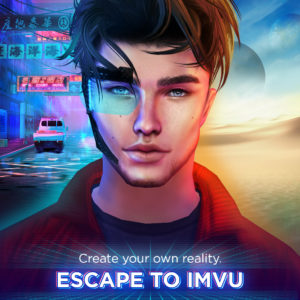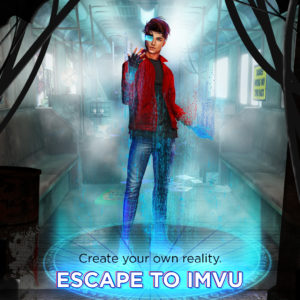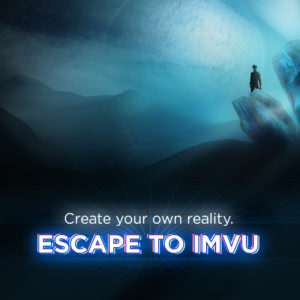Set in 2045, Ready Player One (RP1) creates a picture of a utopic virtual reality where everyone can participate in the story of their dreams. It’s a multimillion-dollar preview of the technological takeover that VR thought leaders are trying to build right now. In describing the relevance of Ready Player One for today’s moviegoers, director Steven Spielberg explains, “The fabric of our economy is crumbling. It’s a good time to escape. In the near future, virtual reality will be a superdrug.”

And escape, they do. To Oasis, a virtual reality world so enticing it is the opioid of the masses. “People are hooked on digital fantasies,” Spielberg says. Perhaps Spielberg is right. Between global warming, an ocean full of plastic, and random acts of terror, there are good reasons to escape from the real world in 2045. In the world RP1 paints, Columbus, Ohio is a dystopian city of “stacks.” It’s no wonder the Oasis experience is so popular—it’s literally the only place to go.
Of course Oasis wasn’t built in a day. It may be years before Virtual Reality is embraced by the public or delivers the same visceral Hollywood blockbuster effects that cost millions. And yet in 2018, there are digital worlds already built that offer audiences movie-worthy entertainment where social networks and video gaming collide: the cartoon-based meet up space like Altspace; the community of Second Life; the life-simulation sandbox game The Sims; world-building creation tools of massive online multiplayer Minecraft; and the avatar-driven social destination IMVU. Beyond mere escapism, the best of these virtual worlds promise, an opportunity to play, experience, or socialize beyond the limitations of the real world. That social aspect of the online experience is exactly what IMVU gets right.
As IMVU CEO Daren Tsui explains, “Virtual worlds can be the next generation social platform connecting people in a realistic way. Instead of posting past each other on Facebook or Instagram, IMVU users experience interactions that are life-like. In IMVU I can see the smirk on my friend’s face when I say something witty; I feel the psychological angst of standing too close to another avatar; I sense the warmth of a hug.”

With just a few button-clicks, IMVU offers access to a rich world of digital experiences designed to simulate real life and enable you to connect with friends in ways impossible on traditional social media networks or video games. Create an avatar (it’s going to be much better looking than anything you can imagine, but you’ll get used to it), visit a late night DJ lounge and the next thing you know, your avatar is on stage dancing with four or five other avatars who are potentially from four different corners of the globe. And those moves your avatar is busting out? All pre-programmed by the creator of the room. If you want to make a friend, just start chatting.
For those that haven’t heard of IMVU or remember virtual worlds from over a decade ago, CEO Daren Tsui is quick to point out IMVU is growing. While he reels off enviable metrics such as 200 million users who can explore over 10,000 rooms and purchase over 40 million items made by 50,000 creators, Tsui explains there are deeper reasons for IMVU’s continuing popularity. “Instead of world building we focus on why people connect,” Tsui says. “We all have the need to make friends, share experiences, hang out, and have fun. IMVU makes it easy to do that with your own avatar, to engage in a real conversation. I can see their nonverbal cues. When I high-five someone in IMVU, I feel elated.”
Ensuring that experience is immersive and engaging is Lauren Bigelow, Chief of Product at IMVU. Bigelow, who recently joined IMVU from a neuroscience startup, thinks people who describe IMVU as a mere role-playing game are missing the point.
“We’re more than a game,” Bigelow says. “At our core—in life and in IMVU—we are hard wired to make emotional connections with people. At IMVU, we’re studying ways to help people meet new people and deepen their social relationships. The shared experiences in IMVU help people bond. We‘re here to spread the power of friendship. And that, according to various research, helps you be happier and live longer.”
New features designed to make the shared experience on IMVU more engaging include Doppel, a technology experiment that uses facial tracking built into the new generation of smartphones to mirror a user’s expressions onto an avatar in real time. Wink at your front-facing camera and your avatar winks. Sing and your avatar sings. Laugh and your avatar laughs with you. The results are uncanny, mesmerizing and brilliant.
When it comes to capturing nonverbal cues, the animations in Doppel have a degree of nuance to which Tsui says, “We’re doubling down on Doppel’s facial mirroring ability. When I can smile, wink, make a video clip and Facetime with another avatar in a 3D room… now we really are in the realm of Ready Player One.”

While RP1 posits a world gone wrong, IMVU envisions a world of deepening friendships and more connected experiences. Clarity, a user who lives in Florida says, “We are all on IMVU for the same reason: to find people, communicate, and share things.”
Clarity admits she’s pretty obsessed with IMVU. She’s on IMVU “typically every other day, talking about real-life stuff” with her sister who lives across the country. “Joining IMVU”, Clarity says, “allows us to have a relationship as sisters. We can do the same thing on IMVU that we would do in the real world, like go shopping, chat, and listen to music.”
It’s one thing to meet up on IMVU and talk with your sister. But what about making new friends? For Whims, an IMVU Creator based in Tucson, the process of building closer friendships depends on how often friends can meet on IMVU. “Frequency builds familiarity,” she says. “You meet someone, you hit it off, you have a good time, so you want to meet and chat with them again.”
Over time, Whims says, as friendships deepen, “you are inclined to be more open.” Plus, she says, “the avatars in IMVU provide a wall of protection that allows you to be more yourself. There’s an openness because there is a level of anonymity. You can be freer on IMVU than in real life. And because you are both on IMVU she says, there’s already a built-in shared interest. Making friends on IMVU offers a level of comfort that might not be there in-person.”
DarkAngel5 has been on IMVU since 2005 when she was one of the first 30 members to join. Today, “I know thousands of people,” she says. As a moderator DarkAngel5 has a front row seat on how people use their avatar to reflect their changing moods. “As users spend more time on IMVU they create an identity of what they want to be,” she says. “Avatars are fluid. One day a person may create an avatar as a furry and join a Furry room. The next they may create a different avatar and join a Fantasy neighborhood. I love the personas created, and the diversity. People are on IMVU every single day to have fun.”
For Victor Zaud, Senior Vice President of Marketing at IMVU, the connected experience that IMVU creates is a fundamental part of its appeal. “What makes IMVU unique” he says, “is that you can bring the friends you already have, you can make new friends, and you can do it from anywhere. You just need a mobile phone and the IMVU app.” Instead of passively scrolling through a social media feed, Zaud says, “IMVU is being social.” It’s all about deepening real friendships through shared experiences and connecting your soul to an avatar you love.”
What’s interesting to Zaud is what happens in a world where everyone looks equally fabulous. After a while he says, “You begin to look past the physical representation of an avatar to focus on who people really are. Naturally you demand more of a connection. When your avatar makes a friend, it touches your heart. You feel something.”
The world of the future in Spielberg’s RP1 is dark. So dark, people escape from it to Oasis. The future of social shines brighter in IMVU, where people are joining for the ability to connect with people in a way as close to real life as possible. It doesn’t take a thousand dollars worth of VR gear to find it. As anyone who has ever joined IMVU knows, all it takes is four bars, some good friends, and a place to post up and create shared experiences that deepen relationships. That, and an avatar that slays.
